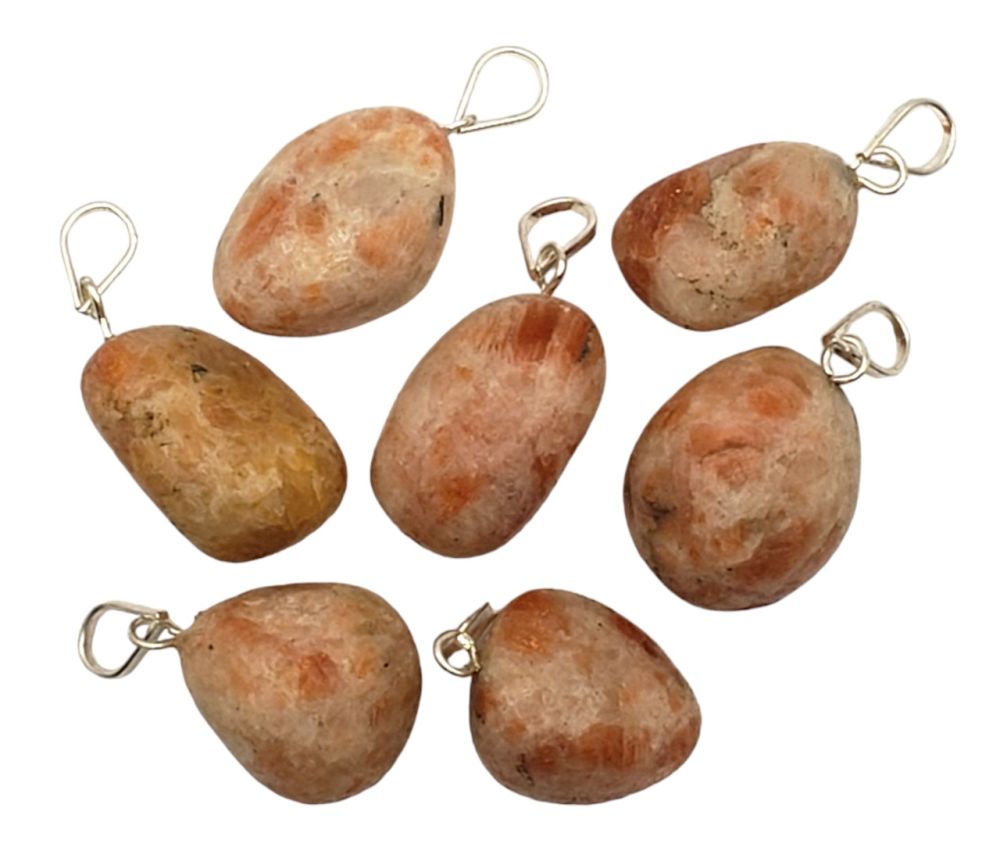We use cookies to make your experience better.
TimmersGems has a new website, existing customers also need to register again.
Drilled pendants of Sunstone from India with drilled silver pin & hanging eye.
Good quality pendants made of various types of beautiful gemstones, which are completely manually drilled and provided with a silver pin.
Availability:
In stock
SKU
120726
- Buy 25 for €1.50 each and save 25%
Drilled pendants of Sunstone from India with drilled silver pin & hanging eye. is available to buy in increments of 10
The mineral oligoclase or sunstone is a sodium-calcium-aluminum tectosilicate with the chemical formula (Na,Ca)(Si,Al)4O8. It belongs to the feldspars. The colorless, greenish, gray or brown oligoclase has a glass luster, a white stripe color, a perfect cleavage according to the crystal plane [001] and a good cleavage according to [010]. The average density is 2.65 and the hardness is 7. The crystal system is triclinic and the mineral is neither radioactive nor magnetic. The name of the mineral oligoclase is derived from the Greek words oligos and klasein, "little cleavage". Oligoclase is a common feldspar in metamorphic and igneous rocks such as pegmatite. It is part of the plagioclase series (albite-anorthite). The type locality of oligoclase is Twedestrand in Norway. The Vikings probably used oligoclase as a navigation instrument to determine the position of the sun at sea in cloudy weather. This mineral can make polarized light visible, which forms circles around the sun due to refraction in the atmosphere. The crystal doubles the rings. If both are equally visible, the crystal is pointed directly at the sun. The rings are also visible when the sun has already set.
| Dimensions | Divers |
|---|---|
| Country of Manufacture | India |











